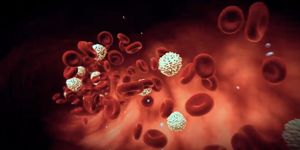Using Stem Cells to Treat Chronic Pain
Reporting in the journal Pain, scientists have used a mouse model to show that human stem cells could be used to engineer neurons that stop pain and provide long-lasting relief with only one treatment. Now, the researchers will be able to move this work to another animal model, and after testing in rodents and pigs, it will be ready for trials in humans that are experiencing chronic pain. They are hopeful that those human clinical trials will commence within five years.
"We are already moving towards testing in humans," noted Associate Professor Greg Neely, a pain research leader at the Charles Perkins Centre and the School of Life and Environmental Sciences at the University of Sydney. "Nerve injury can lead to devastating neuropathic pain and for the majority of patients there are no effective therapies. This breakthrough means for some of these patients, we could make pain-killing transplants from their own cells, and the cells can then reverse the underlying cause of pain."
This approach could also help create more effective options for pain relief that don't involve the risk inherent to opioids.
In this study, the researchers created human induced pluripotent stem cells (iPSCs), using a Nobel-prize winning technique that has helped scientists realize the potential of stem cells; they have the potential to become any type of cell and could be used to replace damaged or defective cells. In this case, they were used to generate neurons (specifically GABAergic neurons), which were then injected into the spinal cords of mice that were models of neuropathic pain. This approach gave the mice pain relief, reported the researchers.
GABAergic neurons can create a constant inhibitory stimulus. Loss of this inhibitory signaling has been connected to neuropathic pain. This therapeutic approach serves to treat that loss.
"Remarkably, the stem-cell neurons promoted lasting pain relief without side effects," said the co-senior study author Dr. Leslie Caron. "It means transplant therapy could be an effective and long-lasting treatment for neuropathic pain. It is very exciting."
"Because we can pick where we put our pain-killing neurons, we can target only the parts of the body that are in pain. This means our approach can have fewer side effects," added the lead study author, graduate student John Manion.
Sources: AAAS/Eurekalert! via University of Sydney, Pain









